No feedback found for this session
Forthcoming session(s)
| Booking link | Date |
|---|---|
| Intermediate Power BI (session 2) | 14:00-16:00 Thu 22nd January 2026 |
KIND learning network training materials by KIND learning network is licensed under CC BY-SA 4.0
September 10, 2025
This is part of our intermediate-level Power BI desktop course. The course structure is as follows:
No feedback found for this session
| Booking link | Date |
|---|---|
| Intermediate Power BI (session 2) | 14:00-16:00 Thu 22nd January 2026 |
In this session, we’ll concentrate on DAX. Specifically, we’ll:
FILTER() and CALCULATE()
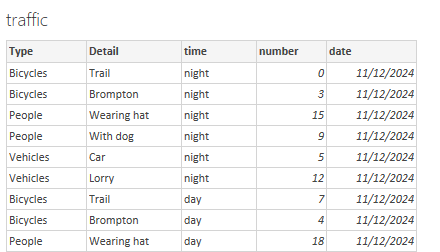
We briefly discussed and implemented a date table in the previous session. Date tables are good practice, because they help you deal with patchy data (especially when you have missing dates), and prevent repetition by consolidating all your date info into one place.
dates table now using the MIN and MAX values from traffic[date]
date is a reserved keyword, so probably better avoided as a table nameWEEKDAY
FORMAT
QUARTER
traffic data, select New column then add the DAX formula temp_col = 66
New measure then temp_measure = 66
temp_measure to a card on a new report pagetemp_xxx functions will be identical: the value of temp_measure will be the same as each row of the temp_col in your datatemp_col formula to use the UPPER function on the [Detail] column: temp = UPPER(traffic[Detail])
temp_measure you’ll cause an error: Power BI won’t know which row you want to change the case of 
FILTER()temp_col = COUNTROWS(filter(traffic, traffic[number] = 3))
FILTER() has changed the default row-by-row contexttraffic[temp_col]
traffic[time] 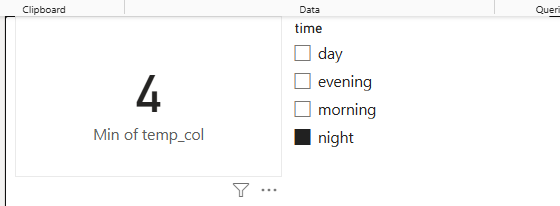
col_sum = SUM(traffic[number])col_sumx = SUMX(traffic, traffic[number])meas_sum = SUM(traffic[number])meas_sumx = SUMX(traffic, traffic[number])min when necessary 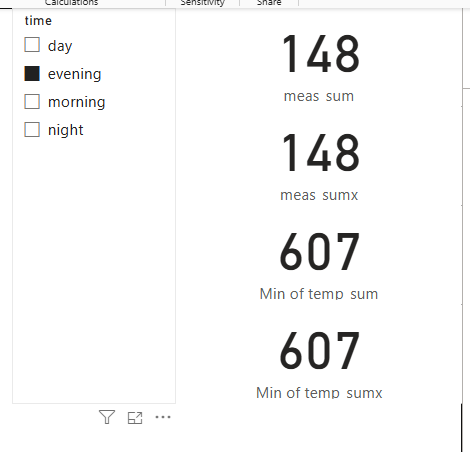
SUM() takes the report filter context, and sums for that time of daySUM() calculates the total for an entire columnSUMX() gives the same result, but it calculates it in a different way…SUMX()SUMX calculations to SUMX(filter(traffic, traffic[number] < 15), traffic[number])
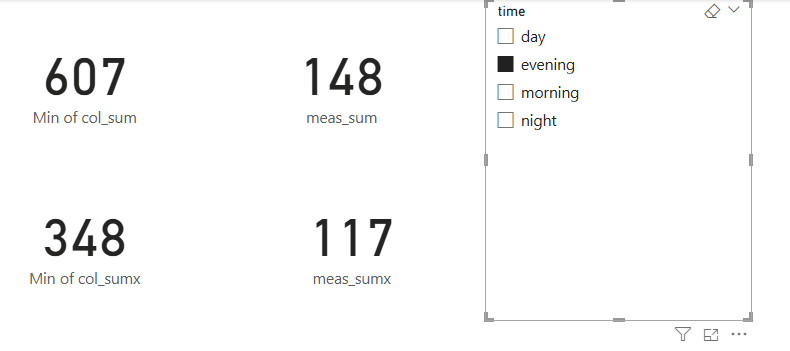
col_sum is showing the total for the entire columnmeas_sum is showing the total for the filtered column (so traffic[time] = morning)col_sumx is showing the total for the filtered column (values of traffic[number] > 15 only)meas_sumx is showing the total for the doubly-filtered column (values of traffic[number] > 15 where traffic[time] = morning)SUMX() is an iteratorSUMX() calculates row-by-rowSUMX() included rows meeting the filter conditionALL()SUM(x[y]) is a sweetened form of SUMX(ALL(x), x[y])
ALL() removes any filter context to include every row of a tableALL() and CALCULATE()
meas_sum to show that:meas_sum = CALCULATE(SUM(traffic[number]), ALL())CALCULATE() is a generic function that changes the filter contextALL(), as we’ve already seen, removes any filtering from the current filter contextALLEXCEPT()ALLEXCEPT() allows you to remove part of the filter contexttraffic[Type]
meas_sum_time = CALCULATE(SUM(traffic[number]), ALLEXCEPT(traffic, traffic[time])) and add to a cardtime, but not to Type
meas_sum_type_time = CALCULATE(SUM(traffic[number]), ALLEXCEPT (traffic, traffic[Type], traffic[time]))
temp_var =
VAR my_var = 66
RETURN my_varCalculation group 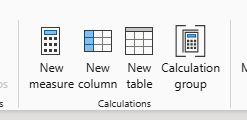
Yes when warned about implicit measures 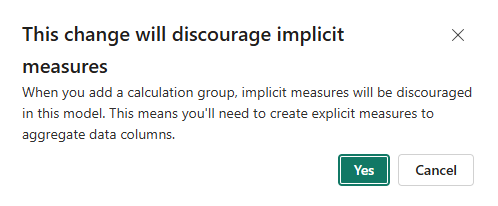
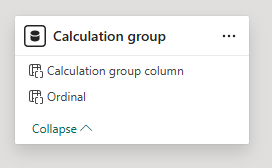
Calculation item in the Model sidebar 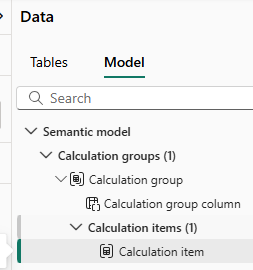
round_10 = ROUND(SELECTEDMEASURE(), -1) to the formula bar